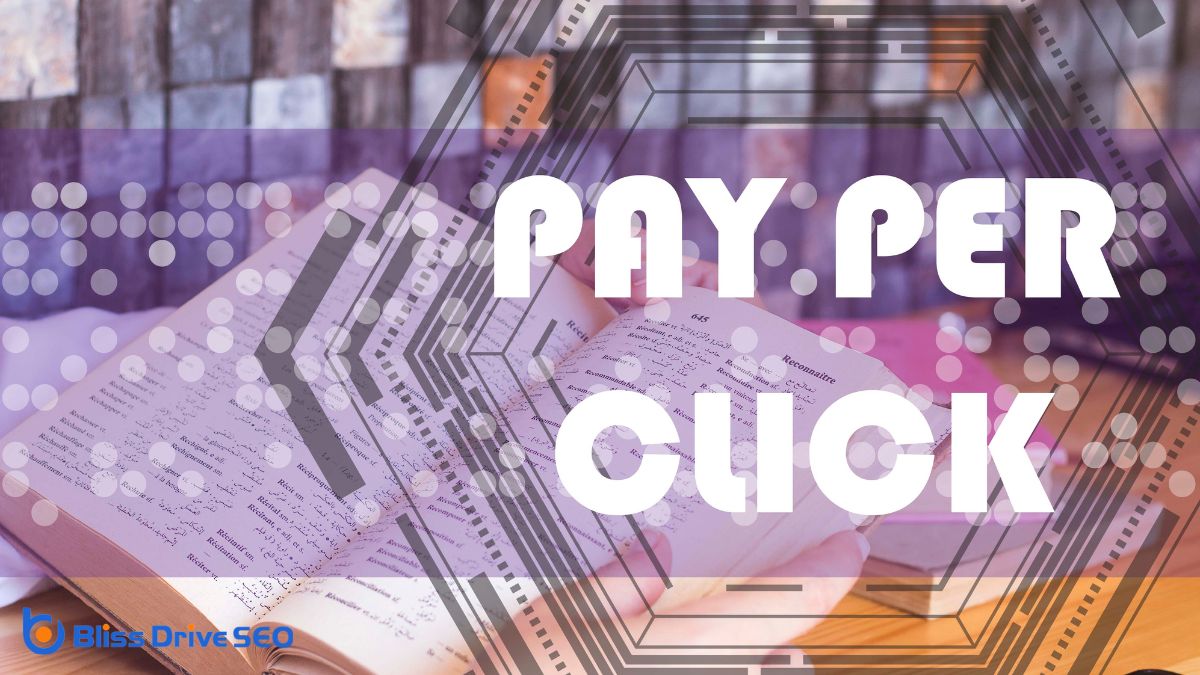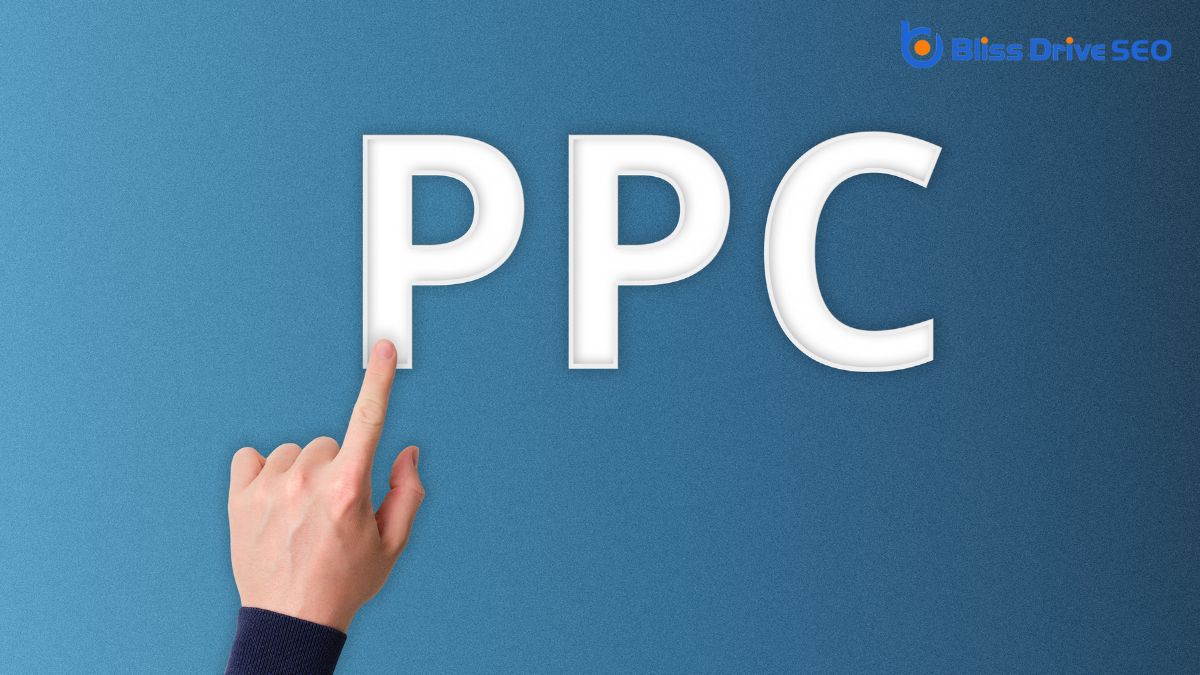Digital Marketing Services
Learn More About Us

You'll use pay-per-click (PPC)An online advertising model where advertisers pay a fee each time their ad is clicked. advertising by selecting a platform like Google Ads, setting your budget, and choosing relevant keywordsWords or phrases that users type into search engines to find information. your audience uses. Create compelling ad copyThe text or content of an advertisement. that includes a clear call to action and highlights your unique selling points. Monitor your campaign's performance, adjust bids, and refine your strategy based on data analyticsThe systematic computational analysis of data or statistics to gain insights and support decision-ma.... Keeping up with industry trends guarantees your PPC efforts remain effective. Explore further to maximize your advertising potential.

Pay-per-click (PPC) advertising is a powerful tool for driving traffic to your website. It operates on a simple principle: you only pay when someone clicks on your ad. This cost-effective approach guarantees your marketing budget directly translates into potential customer engagementThe level of interaction and involvement a customer has with a brand..
To understand PPC, grasp its core elements: keywords, ad copy, and bidding. Keywords are the search terms your audience uses, so choose them wisely. Your ad copy should be compelling and relevant, enticing users to click through.
Bidding involves setting the maximum amount you're willing to pay per click, impacting your ad's visibility. By mastering these basics, you'll set a strong foundation for your marketing strategy, assuring your ads reach the right audience at the right time.
When you're ready to set up your first PPC campaign, starting with a clear objective is essential. You need to know what you want to achieve, whether it's increasing website traffic, generating leads, or boosting sales.
Once your goal is set, follow these steps to launch your campaign:
This approach guarantees your campaign is structured for success.
Now that you've laid the groundwork for your PPC campaign, the next step is selecting the right keywords for your ads.
Start by thinking like your customer. What words or phrases would they type into a search engine when looking for your product or service? Use keyword research tools, like Google Keyword Planner, to find relevant terms with good search volume and low competition.
Focus on long-tail keywordsLonger, more specific keyword phrases that are less competitive and often more targeted.—phrases with three or more words—since they often attract more qualified leads.
Don't forget to contemplate negative keywordsKeywords that prevent ads from being shown for certain search queries., which prevent your ads from showing up in irrelevant searches. This helps you refine your targeting and save money.
Regularly review and update your keyword list to keep your campaign aligned with market trends and user behavior.
While selecting the right keywords is essential, crafting compelling ad copy is where you'll truly capture your audience's attention. Your ad copy should be clear, engaging, and persuasive to encourage clicks.
Focus on the benefits your product or service offers and address any potential customer pain points. Here are some tips to make your ads stand out:
Crafting compelling ad copy is just one part of a successful pay-per-click campaign.
To make the most of your PPC budget, start by setting a clear limit on how much you're willing to spend. Monitor your spending closely to guarantee you're not exceeding this amount.
Adjust your bids based on the performance of specific keywords. If certain keywords are driving more conversions, consider increasing your bid on them. Conversely, lower bids on underperforming keywords to avoid wasting money.
Use ad schedulingSetting specific times and days for ads to appear. to focus your budget during peak times when your target audience is most active.
Don't forget to regularly review and refine your strategy. Staying flexible and responsive will help you get the best return on your investment.
To make the most of your PPC campaigns, it's essential to track conversionThe completion of a desired action by a referred user, such as making a purchase or filling out a fo... rates and see how your ads are performing.
By analyzing this data, you can optimize your ad spendThe total amount of money spent on advertising campaigns., ensuring you're getting the best results for your investment.
You'll also spot audience trends, helping you tailor your ads to reach the right people at the right time.
Understanding conversion rates is essential for optimizing your PPC campaigns and guaranteeing your advertising dollars are well spent.
Conversion trackingThe process of monitoring and measuring actions taken by users after clicking on an ad. lets you see which ads leadA potential customer referred by an affiliate who has shown interest in the product or service but h... to sales, sign-ups, or other desired actions. To effectively track conversion rates, follow these steps:
While running a PPC campaign, optimizing ad spend becomes essential to maximizing your return on investment. You need to explore data analytics to make informed decisions.
Start by analyzing key metrics like click-through rates (CTR), cost per click (CPC), and conversion rates. These numbers help you understand how your ads perform and where you can cut costs or boost spending.
Use tools like Google Analytics to track user behavior and pinpoint high-performing keywords. Regularly review your ad settings and adjust bids based on performance data.
Don't forget A/B testingA method of comparing two versions of a web page or app against each other to determine which one pe..., which lets you compare different ad versions to see what resonates best with your audience.
Why should you focus on identifying audience trends in your PPC campaigns? Understanding these trends helps you tailor your ads to meet customer needs, increasing engagementThe interactions that users have with a brand’s content on social media. and conversion rates.
It's essential to use data analytics to reveal patterns and preferences within your target audience. By doing so, you can enhance your PPC strategy and maximize ROI.
Here's what you should look for:
Analyzing these trends empowers you to refine your campaigns effectively.

When you're running a pay-per-click (PPC) campaign, constantly refining your approach is key to maximizing results.
Start by setting clear goals and regularly reviewing them. Use A/B testing to compare ad variations and identify what works best.
It's essential to monitor performance metricsKey indicators used to measure the effectiveness of affiliate marketing efforts, such as clicks, con... like click-through rates (CTR) and conversion rates to spot trends and areas needing improvement. Adjust your keywords and bids based on this data to guarantee you're targeting the right audience efficiently.
Don't forget to keep an eye on your competitors, learning from their successes and mistakes.
Finally, stay updated on industry changes and platform updates. This knowledge helps you adapt quickly, ensuring your PPC strategy remains effective and aligned with current trends and technologies.
By mastering PPC advertising, you can effectively drive traffic to your website and boost conversions. Start by setting up your first campaign and choose the right keywords to target your audience. Write compelling ad copy that captures attention and manages your budget wisely to maximize returns. Regularly analyze your campaign's performance using data analytics and keep refining your strategy for continuous improvement. With dedication and strategic planning, you'll see your PPC efforts pay off.
